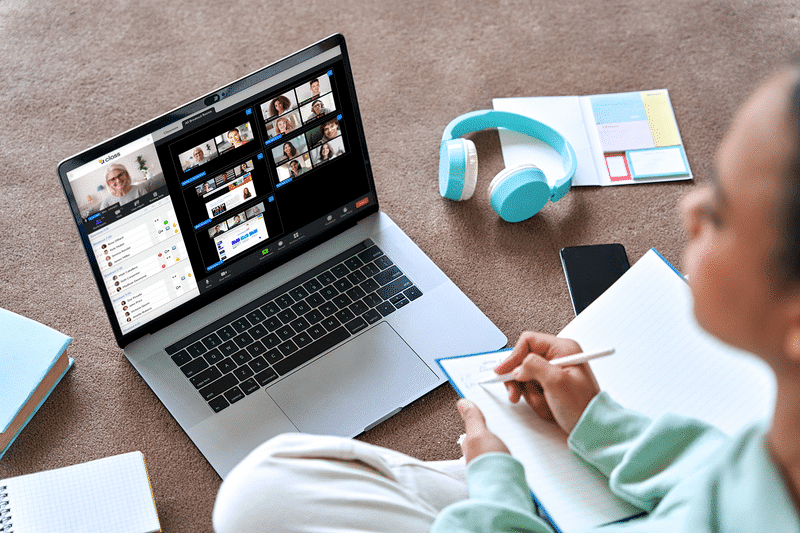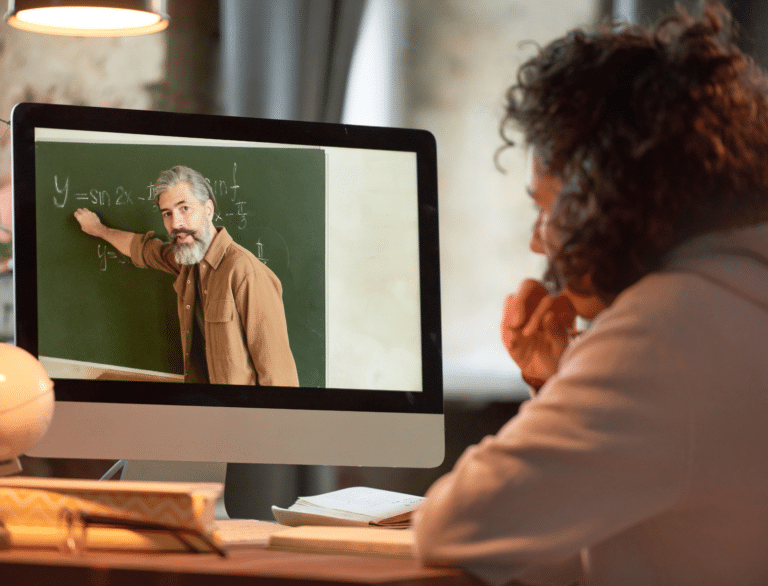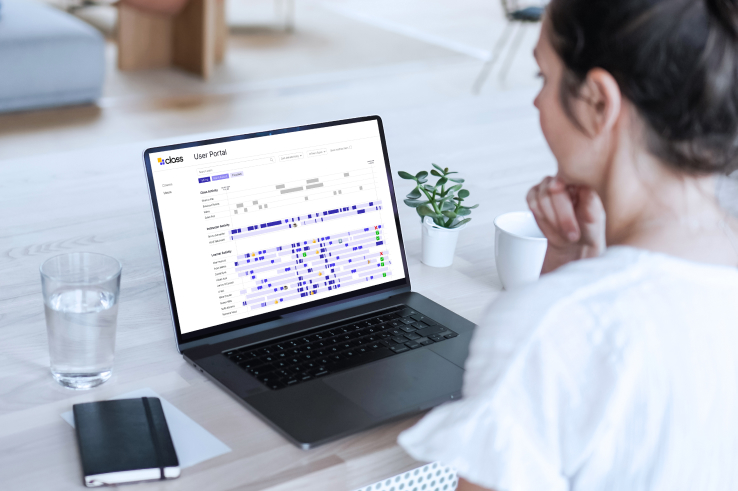College looks and feels different these days as the pandemic has upended how classes have traditionally been taught—in person. While colleges were further ahead in online training than K-12 institutions before the pandemic, much of that online learning was asynchronous. In addition, the technology used to deliver information was pretty basic.
That’s changed significantly over the past several months, and even though many schools have returned, at least to some degree, to in-person classes, virtual classes are here to stay, and for a good reason. Students, educators, and administrators have found the online environment to provide a wide range of benefits from flexibility, reduced commuting costs, and the ability to connect with experts—and students—around the globe.
Even classes that may not have been previously viewed as conducive in an online environment—e.g., manufacturing classes or other classes requiring hands-on work and interaction—are finding ways to make the shift through technology.
College and Career Readiness Definition
College and Career Readiness refers to the level of preparedness a student needs in order to successfully transition from high school to postsecondary education, vocational training, or the workforce. This is a collection of skills, knowledge, and abilities that determine how ready a student is for the next phase of their education or work.
Key elements of college and career readiness include:
- Academic skills
- Critical thinking and problem-solving skills
- Communication skills
- Collaboration skills
- Technical skills
- College and career awareness
- Self-management and adaptability
- Financial literacy
- Social and emotional skills
- Cultural competence
By fostering these skills and knowledge throughout their K-12 education, students can better navigate the transition and achieve success in their chosen college, career, or vocational path.
Major Shifts in the Delivery of Education and College Readiness
StrataTech Education Group, for example, focuses on specialized career education, particularly skilled-trade programs. Their portfolio includes The Refrigeration School, Inc. (RSI), Tulsa Welding School (TWS), Tulsa Welding School Jacksonville, and Tulsa Welding School & Technology Center (TWSTC).
Who would have thought these types of hands-on courses could be taught virtually? But, thanks to advances in technology, they now can, including the use of virtual reality—StrataTech Education Group’s OcuWeld. The program, which uses Oculus Quest 2 technology, will be among the first to use this revolutionary technology to practice welding skills outside of the classroom. According to a news release, “The program allows students to learn the time-consuming and highly physical tasks of prepping, grinding, and joining materials in a virtual environment that mimics classroom lab training.”
That’s the kind of innovation that will continue to shift how education is delivered. But what impacts will these shifts have on college and career readiness?

Technology and Its Impacts on College Readiness and Career Trajectory
College and career readiness occur at high school and higher ed levels, generally through career services programs. However, many think the responsibility of college and career readiness should be significantly expanded to include the entire institution.
In an article for Inside Higher Ed, for instance, Rachel Toor, a professor of creative writing at Eastern Washington University in Spokane, writes: “If we take seriously the problem of student debt, if we believe parents and students when they say that what they want out of a college degree is a good job (whatever that means to them), if we listen to what employers are saying about the disconnect between what students are learning in class and the competencies they need in the workforce, we might all start thinking about our jobs as faculty a little differently.”
Many teachers and professors are rising to that challenge; technology is helping them offer students relevant real-life experiences to gain insights into future career opportunities.
Dr. Eddy van Hunnik at Alamance Community College in Graham, North Carolina, for instance, uses Labster to provide microbiology and genetics students with virtual lab simulations to help prepare them for in-person laboratory time or, in some cases, to take the place of in-person lab time for students with work or family commitments.
Students, he says, have greatly benefited from these simulations. He shares a specific example related to the gram stain where students need to learn what is pink and purple. “You’d thin kit’s an easy thing to do, but it’s not,” he says. “When they’ve done the Labster assignment beforehand, I get fewer questions,” he says. “They’re making the connections when they’re in the in-person lab.
Career Readiness Starts with Realistic Job Previews
Corporations are also taking steps to provide job candidates with realistic job previews and, in some cases, opportunities to try out a specific role. MGM, for instance, is implementing Strivr VR technology to offer job candidates at recruitment offices the chance to try guest services roles in VR before moving forward in the hiring process. As a result, applicants can simulate checking in customers and dealing with difficult casino patrons, among other tasks. They expect the program to save significant time and money in recruitment and retention because it will allow MGM to evaluate candidate qualifications and applicants better to assess whether they want to do this type of work.
“By using AR and VR as a portal for career exploration, students have the opportunity to determine before spending money and time on training whether or not their chosen profession is the right one for them,” writes Matthew Lynch in an article for The Tech Edvocate. “It’s possible that students will spend less time trying to decide on a career path. Instead, they’ll launch their futures much quicker because of the head start this new AR, and VR approaches to technology provide.”
This is true at both the high school and community college levels. In addition, the ability to explore various career options with technology as an aid both as part of the educational process and to “try on” different jobs offers benefits for students, educational institutions, and employers.
Download the eBook, The Guide to Hybrid: Opportunities for the Next Generation Campus, to understand the benefits of offering hybrid learning at your institution and get practical tips to overcome common challenges.







